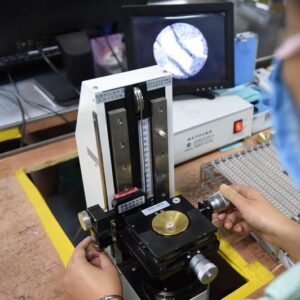SUPERIOR® Optics tests every optical specification and provides complete inspection procedure and Certificate of Compliance (COC) for each production batch. Our manufacturing and QA inspection processes strictly follow ISO:9001:2015 standards, offering our customers a worry-free procurement experience. 
The flow chart below illustrates the standard QA processes in a spherical lens production at our facility. An assigned QA manager oversees the production process and implement corresponding quantitative measurements at every step of production to ensure lens quality.
After the optics are completed, they are now ready for assembly. Our skilled assembly technicians employ a full range of metrology during assembly to finetune alignment precision and accuracy.
Furthermore, SUPERIOR® Optics conducts thorough testing to ensure that the assemblies we produce will meet or exceed the optical performance specifications required for your application needs. A detailed report on MTF plots, focal length, F#, chromatic aberration, and distortion will be provided.
